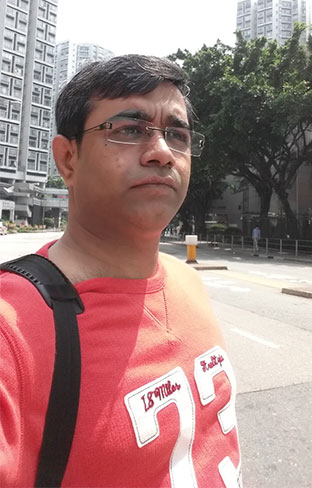What is the real reason behind the outrage on ‘Shani Shingnapur’?
- In Current Affairs
- 08:48 PM, Feb 11, 2016
- Sagar Kinhekar
In 1290s a female social reformer, often ignored by historians, changed the way that women were looked upon in Maharashtra. Muktabai, who was a great scholar of Vedas and Upanishad, worked to eliminate untouchability. She was a saint of the famous ‘Varkari’ tradition. Later in the 1600s there was another great female saint called Bahinabai. Medieval Marathi tradition is also rich with stories of many great female warriors like Lakshmi Bai or Ahilya Bai Holkar. In late 1880s we have had many female social reformers like Savitri Bai Phule or Rama Bai Ranade.
In 1881 a British gazette mentions the state of Maharashtra’s women. It mentions that the widows had to always wear dark red saree and keep their heads shaven. Many of these widows were victims of rape by relatives, landlords and other powerful people of society. If they got pregnant they used to either kill their newborn or commit suicide. Sometime in late 1870s, Jyotirao Phule, also known as Mahatma Phule stopped one such pregnant widow. She pleaded Phule to leave her free to commit suicide as there was no future for the child born out of rape. Mahatma’s wife Savitri Bai Phule asks Mahatma Phule to give the child his name. She braved society’s stiff opposition in doing so but remained indefatigable. The child later became a doctor. Savitri Bai later did a lot of work in improving the life of women folks by working for their education and skill development. Later Rama Bai Ranade worked tirelessly for improving social conditions of women sometime between 1890 to early 1900s.
Maharashtra due to all these reformers and great personalities today has one of the least hierarchical societies, from the perspective of either caste or gender. In the past decade few institutions like Jnana Prabodhini in Pune have started giving training in priesthood to women. In 2014 Vitthal temple of Pandharpur, one of the most important pilgrimages of Maharashtra, appointed Dalit and Female priests. Since my childhood I have not seen any untouchability or discrimination due to caste or gender in my own extended family, although I belong to a very religious Marathi Brahmin family.
In such a culture when one sees an agitation for entry of women inside a temple it becomes very confusing. Why should a state with such progressive attitude have temples where women can’t enter? In the last couple of days some activists are agitating so that the entry for women is allowed in Shani Shingnapur temple. Does the temple bar entry of women? Not really. Women can enter the temple but can’t climb the platform where the Shani idol is installed. The reason seems to be that since women symbolize fertility in family, they are hidden from direct contact with Shani idol, which may affect the fertility.
This is a tradition the village has been following for long and villagers want the tourists and pilgrims to follow. When we are so tolerant of religious beliefs and traditions of all religions, the opposition to this particular tradition seems to be little odd. These villagers have all the right to preserve their culture. Since this tradition is not really harming anyone and is followed even by women of the village, who are we to question it and ask it to be changed? If you ask my personal opinion, I will agree that probably the tradition is wrong. Should women be allowed to offer Pooja and to touch idol? Yes by all means. But one, the issue is not really important and two, villagers have all freedom to follow a tradition as long as it is not illegal.
In Maharashtra, women have already won the struggle of finding their place in society long back. Today a female priest or a female taxi driver may raise eyebrows in many parts of India but not in Maharashtra. Therefore a symbolic agitation like the one in Shani Shingnapur really doesn’t do any good for feminist movement. This is not to say that women in Maharashtra don’t face any problems.
Today there are many real issues faced by the women of Maharashtra. Due to water scarcity and lack of crop insurance famer suicides have been rampant in the last decade. The women left behind after the farmers commit suicide have to tend to their family. They mostly work in unorganized sectors to earn money. Exploitation is many forms including sexual exploitation is very common by employers and money lenders.
Other major issue is the lack of separate toilets for girls in rural schools which unfortunately makes many girls quit their studies once they attain puberty. There are several other issues like malnutrition, female feticide amongst others.
It takes a lot of hard work to work on these issues and most of this hard work goes unnoticed. Activists working on these issues don’t get airtime on TV and headlines in print media. Is this the reason why such non-issues like temple entry are being agitated for? There are many out there who are also pointing out the silence of these activists on gender discrimination in places of worship of other religions. So is the reason of this agitation to attack the Hindu religion in particular?
I would like to believe the real reason is to get more headlines and not something sinister like a few people are pointing out. It better not be.







Comments